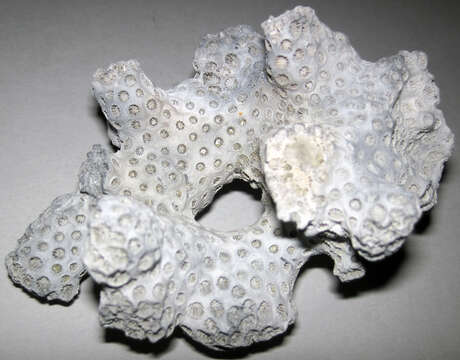Solenastrea hyades (fossil coral) (Aurora, North Carolina, USA) 1

Description:
Description: English: Solenastrea hyades (Dana, 1846) - fossil coral from the Pleistocene of North Carolina, USA. Scleractinians are significant reef-building organisms in Earth's warm, shallow oceans. They first appear in the Triassic and are the only group of stony corals in modern oceans (in the Paleozoic, tabulates and rugosans were the principal stony coral groups). Scleractinian corals consist of individuals or colonies of gelatinous polyps that secrete hard calcareous (CaCO3) skeletons. Most live in warm, tropical to subtropical, photic zone environments (the shallow portions of the world’s oceans where sunlight penetrates). Scleractinian corals are predators - they have stinging cells (nematocysts) in their tentacles that paralyze prey. They also obtain sustenance from microbes called zooxanthellae (usually dinoflagellates) that live in their tissues and need to be in sunlight to manufacture food by photosynthesis. The food is shared with the host coral. Classification: Animalia, Cnidaria, Anthozoa, Hexacorallia, Scleractinia, Faviina, Faviidae Stratigraphy: unrecorded, but probably the Croatan Formation (a.k.a. James City Formation), Lower Pleistocene Locality: unrecorded site at or near the town of Aurora (probably the Lee Creek Mine), southern shore of Pamlico Sound, southern Beaufort County, eastern North Carolina, USA. Date: 3 May 2021, 00:06:54. Source: https://www.flickr.com/photos/47445767@N05/51164118248/. Author: James St. John.
Included On The Following Pages:
- Life (creatures)
- Cellular (cellular organisms)
- Eukaryota (eukaryotes)
- Opisthokonta (opisthokonts)
- Metazoa (Animal)
- Cnidaria (cnidarians)
- Anthozoa (anemones and corals)
- Hexacorallia (hexacorallians)
- Scleractinia (stony corals)
- Faviidae
This image is not featured in any collections.
Source Information
- license
- cc-by-3.0
- copyright
- James St. John
- creator
- James St. John
- source
- James St. John (47445767@N05)
- original
- original media file
- visit source
- partner site
- Wikimedia Commons
- ID


